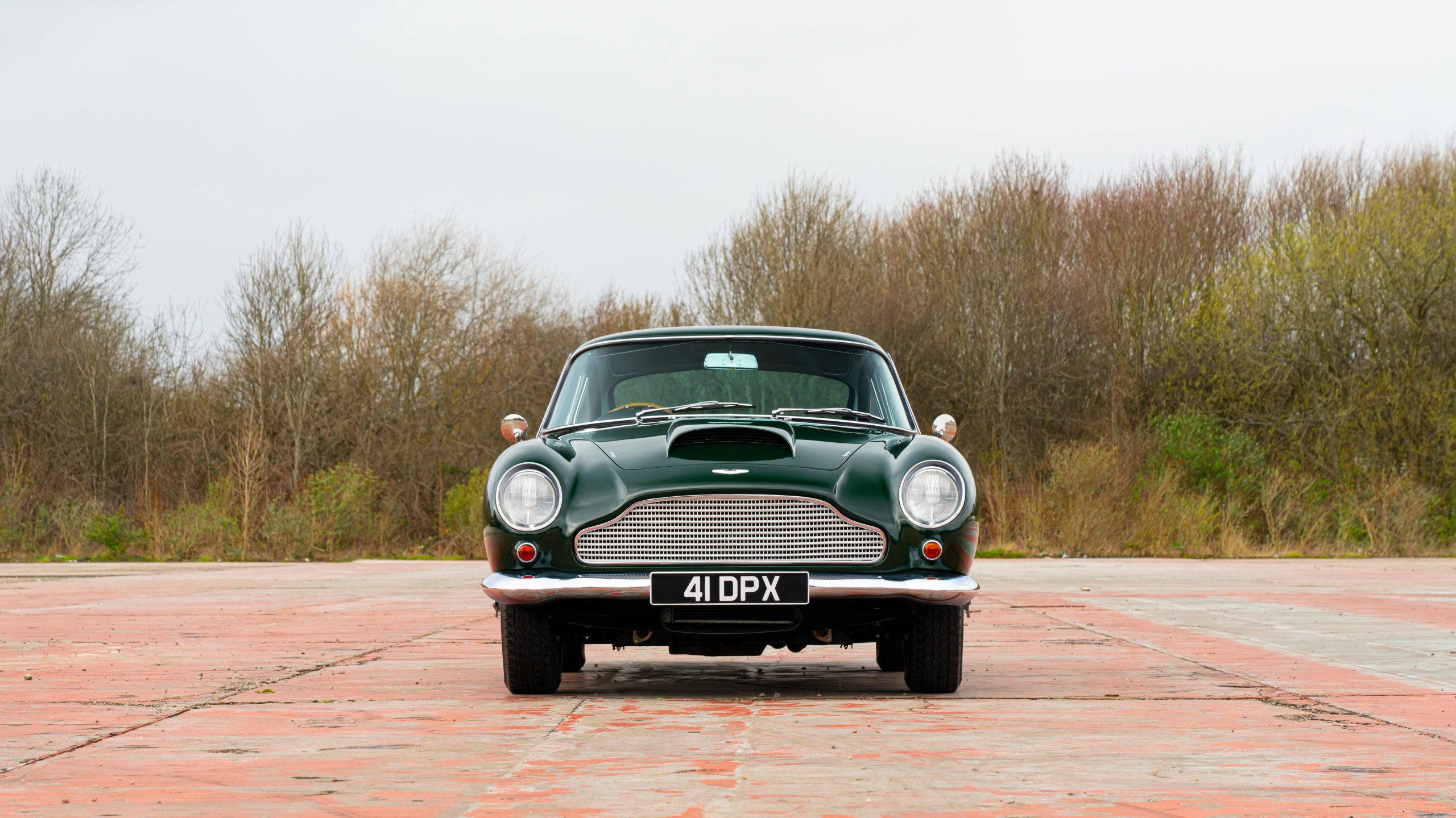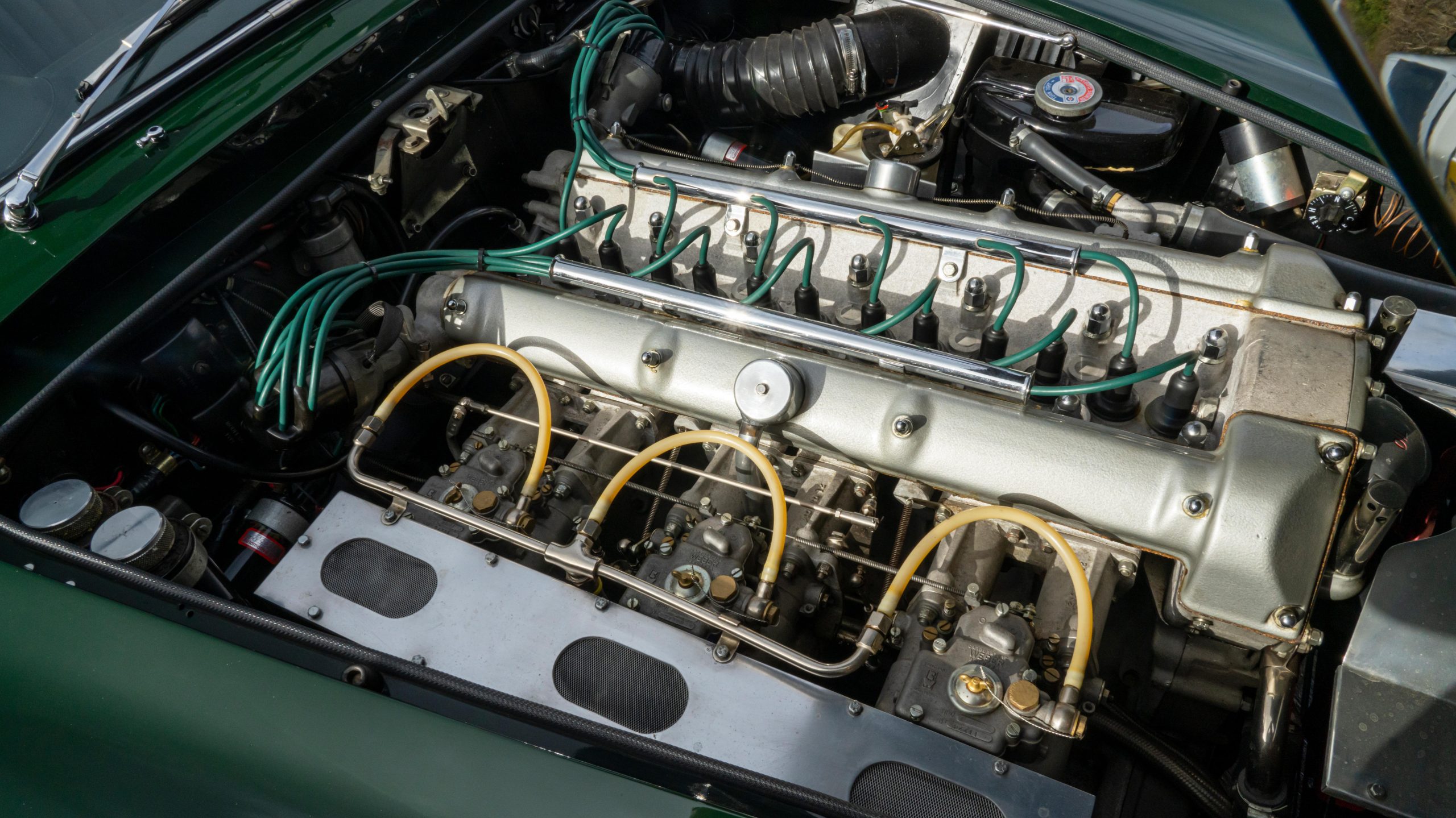1959 was a great year for Aston Martin Racing as they secured a one-two finish at the grueling Le Mans 24 Hours with Shelby/Salvadori and Trintignant/Frére. Unfortunately, the sport was deemed too expensive to maintain so David Brown decided to withdraw and let the private teams defend the marque with the DBR1.
John Wyer, Aston Martin’s competitions manager, decided that to maintain the presence in GT, the DB4 GT was launched. The prototype was first seen at Silverstone in May 1959 with Sir Stirling Moss at the helm where he enjoyed an easy victory ahead of the John Coombs-prepared Jaguar 3.4-liter driven by Roy Salvadori. The famous British driver later stated, “The DB4 GT was really well balanced and powerful.”
The new model made its official debut at the London Motor Show at the end of a very successful year. The DB4 GT was targeted at wealthy amateur drivers as it was lighter and more powerful than the standard DB4 and soon claimed the title of the fastest production car in the UK.
The DB4 GT was based on the DB4 platform but shortened by almost 13cm. It was strictly a two-seater with a Touring bodywork created to the Italian coachbuilder’s “Superleggera” specification and equipped with magnesium alloy panels and plexiglass rear quarter-lights. Unlike the standard version, the mesh grille had a huge air intake at the bottom for the oil radiator. Its faired-in headlights would also be seen on the DB5.
The car had 16-inch Borrani wheels and had fuel fillers on top of each rear wing. The 136-liter fuel tank used up all the available space in the boot. Although the DB4 GT was made for racing, it kept all the top-of-the-range features of their high-end models, with its luxurious interior comparable to the DB4. It had leather seats and a beautiful instrument panel that is similarly shaped like the front grille.
From 1959 to 1963, there were only 75 examples that were produced, making the DB4 GT one of the most limited-edition road-going Aston Martins manufactured, just behind the Zagato model.
Photo Source: Bonhams

















